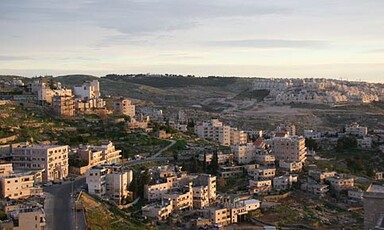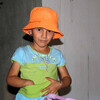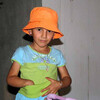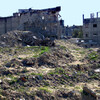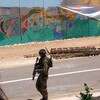
Israeli Army stops West Bank mural project, citing Gaza disengagement
31 August 2005
A Palestinian family from the town of Mas’ha, recently collaborated with US, Palestinian, International and Israeli artists and activists to paint a mural of hope and resilience on the 280 feet long by 24 feet high Occupation Wall that faces their front door. On 22 August 2005, the Israeli commander of the Salfit region threatened to take away the key that lets the family out of their home if the US, Palestinian and Israeli artists did not cease painting immediately and vacate the premises. He considered the mural of trees, flowers and birds a “provocation” to the Gaza settlers being relocated to the West Bank. Read more about Israeli Army stops West Bank mural project, citing Gaza disengagement


